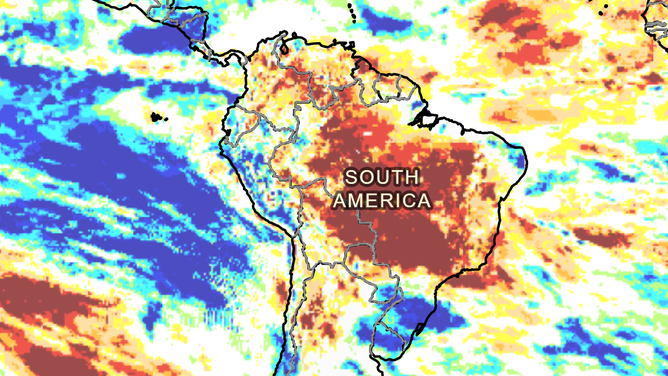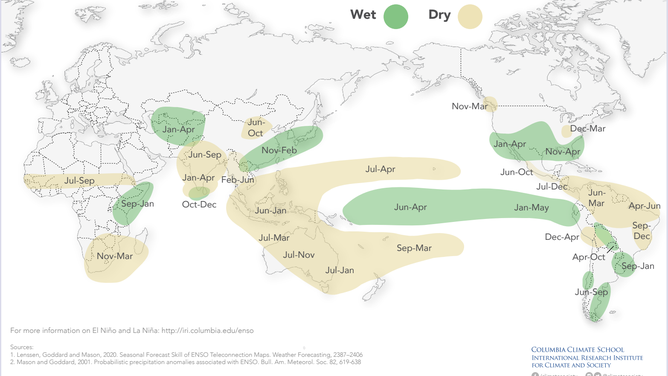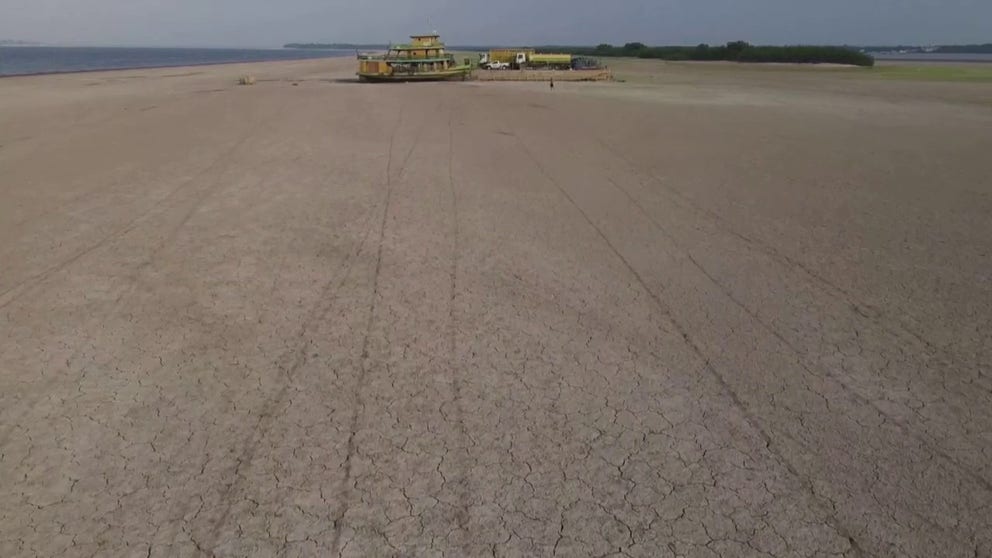Could climate change be to blame for South American drought?
Warming sea surface temperatures in the central-east equatorial Pacific lead to the formation of an El Niño climate patterns. The current El Niño began in June 2023 and is expected to end its run in 2024.
El Nino played key role in 2023's wild weather
Pedro DiNezio, associate professor of Atmospheric and Oceanic Sciences at the University of Colorado Boulder, joins FOX Weather as we look back at a year of intense weather and climate.
Scientists with the World Weather Attribution group have suggested in a new study that climate change, not El Niño, has been a driving force behind a severe drought plaguing South America.
Experts released their analysis on Wednesday and said the drought has threatened livelihoods and ecosystems in half a dozen countries.
The group’s analysis ran from June to November 2023, and not while the El Niño was at its peak.
The study claimed that warming global temperatures were the biggest driver behind the drought but made little evidence available to reinforce their theory.
"El Niño reduced the amount of precipitation in the region by about the same amount as climate change; however, the strong drying trend was almost entirely due to increased global temperatures, so the severity of the drought currently being experienced is largely driven by climate change," authors stated in a study summary.

South America drought
(NOAA)
EL NINO APPEARS TO BE ON VERGE OF RAPID COLLAPSE
Strong El Niño events have historically led to significant droughts across the continent, with historic wildfires and low river levels.
During past events, drier conditions have prevailed across Brazil, while heavy rainfall has typically been reported in Peru and Ecuador.
Classic scenes of El Niño’s impacts were spotted in 2023, from raging wildfires in Argentina to cargo vessels that were stranded in the Amazon due to low water levels.
Researchers said the low water levels restricted travel, reduced drinking water supplies and led to crop failures.
"Waterways dried up in a matter of months. People were forced to make huge journeys, dragging boats over dried-up sections of river to access food, medicine and other essential goods," Simphiwe Stewart, an author of the study, said. "Many communities living in the Amazon basin simply haven’t seen a drought like this before."

El Nino typical impacts
(Columbia Climate School International Research Institute for Climate and Society )
DRONE VIDEO SHOWS STRANDED SHIPS ON AMAZON RIVER AS PORT REACHES 121-YEAR LOW LEVELS
Climate outlooks point to a rapid demise of El Niño during the spring, but like many large-scale events, there is typically a significant lag in changes in weather patterns.
A lag is rather common as one controlling cycle transitions into another. The world typically experiences a lag during large-scale events.
Take the summer solstice in the Northern Hemisphere, for example; even though it occurs every June in the Northern Hemisphere, oceans and land usually don’t peak in temperature until July and August.
For South America, it is unclear when the continent will see a reversal in weather patterns, but if what the World Weather Attribution group claims is true, a relaxation out of an El Niño into a neutral status won’t result in as significant of changes as one would expect to see decades ago.
The study did not state whether scientists would reexamine data after the El Niño has waned to definitively draw any conclusions on the effects of the globe’s most powerful climate driver.
Drone video shows boats stranded on Amazon River amid drought
Drone video shows the extreme drought conditions on the Amazon River causing ships and cargo to become stranded.

